
The Monster Manual is the primary bestiary sourcebook for monsters in the Dungeons & Dragons fantasy role-playing game, first published in 1977 by TSR. The Monster Manual was the first hardcover D&D book and includes monsters derived from mythology and folklore, as well as creatures created specifically for D&D. Creature descriptions include game-specific statistics, a brief description of its habits and habitats, and typically an image of the creature. Along with the Player's Handbook and Dungeon Master's Guide, the Monster Manual is one of the three "core rulebooks" in most editions of the D&D game. As such, new editions of the Monster Manual have been released for each edition of D&D. Due to the level of detail and illustration included in the 1977 release, the book was cited as a pivotal example of a new style of wargame books. Future editions would draw on various sources and act as a compendium of published monsters.
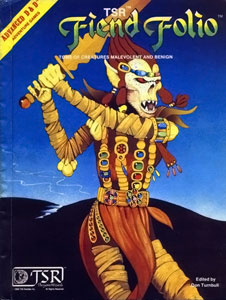
Fiend Folio is the name of three separate products published for successive editions of the fantasy role-playing game Dungeons & Dragons (D&D). All three are collections of monsters.

Ravenloft is an adventure module for the Dungeons & Dragons (D&D) fantasy role-playing game. The American game publishing company TSR, Inc. released it as a standalone adventure booklet in 1983 for use with the first edition Advanced Dungeons & Dragons game. It was written by Tracy and Laura Hickman, and includes art by Clyde Caldwell with maps by David Sutherland III. The plot of Ravenloft focuses on the villain Strahd von Zarovich, a vampire who pines for his lost love. Various story elements, including Strahd's motivation and the locations of magical weapons, are randomly determined by drawing cards. The player characters attempt to defeat Strahd and, if successful, the adventure ends.
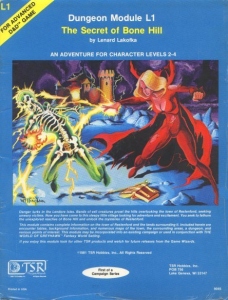
The Secret of Bone Hill is an adventure module written by Lenard Lakofka for the first edition of Advanced Dungeons & Dragons and published by TSR in 1981. It is designed for novice and intermediate players with characters of levels 2-4. The module received mixed reviews from critics.

In Search of the Unknown is a module for the Dungeons & Dragons roleplaying game, designed for use with the Basic Set of rules. It was written by game designer Mike Carr and was first published in 1978 by TSR, Inc. The module details a hidden complex known as the Caverns of Quasqueton. Reviewers considered it a good quality introduction to the game that was written in the so-called dungeon crawl style, where the primary goal of the players is the exploration of a dangerous labyrinth to battle monsters and obtain treasure.

From the Ashes is a supplement for Dungeons & Dragons's World of Greyhawk campaign setting.
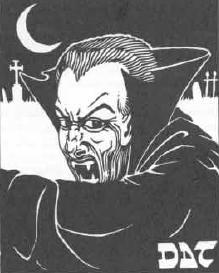
In the Dungeons & Dragons fantasy role-playing game, a vampire is an undead creature. A humanoid or monstrous humanoid creature can become a vampire, and looks as it did in life, with pale skin, haunting red eyes, and a feral cast to its features. A new vampire is created when another vampire drains the life out of a living creature. Its depiction is related to those in the 1930s and 1940s Hollywood Dracula and monster movies. In writing vampires into the game, as with other creatures arising in folklore, the authors had to consider what elements arising in more recent popular culture should be incorporated into their description and characteristics.
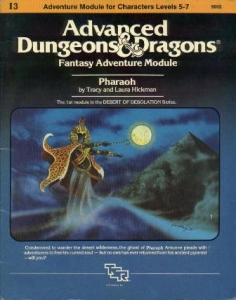
Desert of Desolation is a compilation adventure module published by TSR for the Dungeons & Dragons (D&D) fantasy roleplaying game. It combines three previously published individual modules: Pharaoh, Oasis of the White Palm, and Lost Tomb of Martek. The modules were made for use with the first edition Advanced Dungeons & Dragons (AD&D) rules. Pharaoh was created by Tracy and Laura Hickman soon after the couple married in 1977, and published by TSR in 1982. Oasis of the White Palm was a collaboration between Tracy Hickman and Philip Meyers, and Hickman wrote the Lost Tomb of Martek on his own; both were printed in 1983.

Night's Dark Terror is an adventure module for the Dungeons & Dragons (D&D) fantasy role-playing game written by British game designers Jim Bambra, Graeme Morris, and Phil Gallagher. It was designed specifically for campaigns transitioning from the D&D Basic Set to the D&D Expert Set. The player characters (PCs) journey from a farmstead into uncharted wilderness, where they encounter new hazards and contend with a secret society. The adventure received a positive review from White Dwarf magazine.
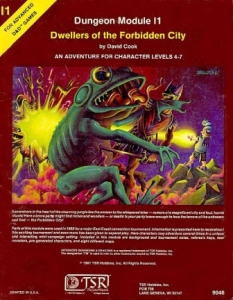
Dwellers of the Forbidden City is an adventure module, or pre-packaged adventure booklet, ready for use by Dungeon Masters in the Dungeons & Dragons (D&D) fantasy role-playing game. The adventure was first used as a module for tournament play at the 1980 Origins Game Fair, and was later published by TSR in 1981 for use with the first edition Advanced Dungeons & Dragons rules. The module was written by game designer David "Zeb" Cook, who partly ascribes his hiring by TSR to his work on this module. In the adventure, the characters are hired to recover a stolen object from a hidden oriental-style city ruled by a snake-worshipping cult of yuan-ti and their mongrelmen and tasloi servants.

The Dungeons & Dragons Basic Set is a set of rulebooks for the Dungeons & Dragons (D&D) fantasy role-playing game. First published in 1977, it saw a handful of revisions and reprintings. The first edition was written by J. Eric Holmes based on Gary Gygax and Dave Arneson's original work. Later editions were edited by Tom Moldvay, Frank Mentzer, Troy Denning, and Doug Stewart.

The Ruins of Undermountain is a boxed set for the Forgotten Realms campaign setting for the second edition of the Advanced Dungeons & Dragons fantasy role-playing game. The set was written by Ed Greenwood and published by TSR. It featured box cover art by Brom. and was published in 1991.

The Dungeons & Dragons Companion Set is an expansion boxed set for the Dungeons & Dragons (D&D) fantasy role-playing game. It was first published in 1984 as an expansion to the Dungeons & Dragons Basic Set.
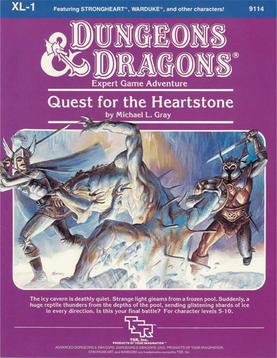
Quest for the Heartstone is a 1984 adventure module for the Basic Rules of the Dungeons & Dragons fantasy role-playing game. The module was a tie-in with the LJN toy line introduced the previous year. Reviews of the module described it as a poorly written marketing gimmick.

The Book of Lairs is an accessory book for the Dungeons & Dragons fantasy role-playing game, first published by TSR in 1986. It contains an assortment of monster-themed mini-adventures. A second volume was published in 1987. TSR coded the accessories REF3 and REF4 respectively, as part of a series of similarly-coded accessories. Both volumes were received well by critics, with the second being seen more positively than the first.

Dungeon Masters Screen is an accessory for the Dungeons & Dragons fantasy role-playing game.
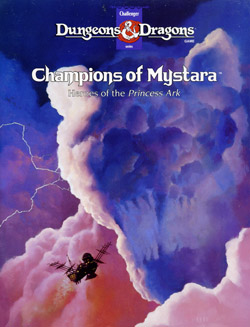
Champions of Mystara is an accessory for the Dungeons & Dragons fantasy role-playing game, published in 1993.

Sons of Azca is an accessory for the Dungeons & Dragons fantasy role-playing game, published in 1991.

















